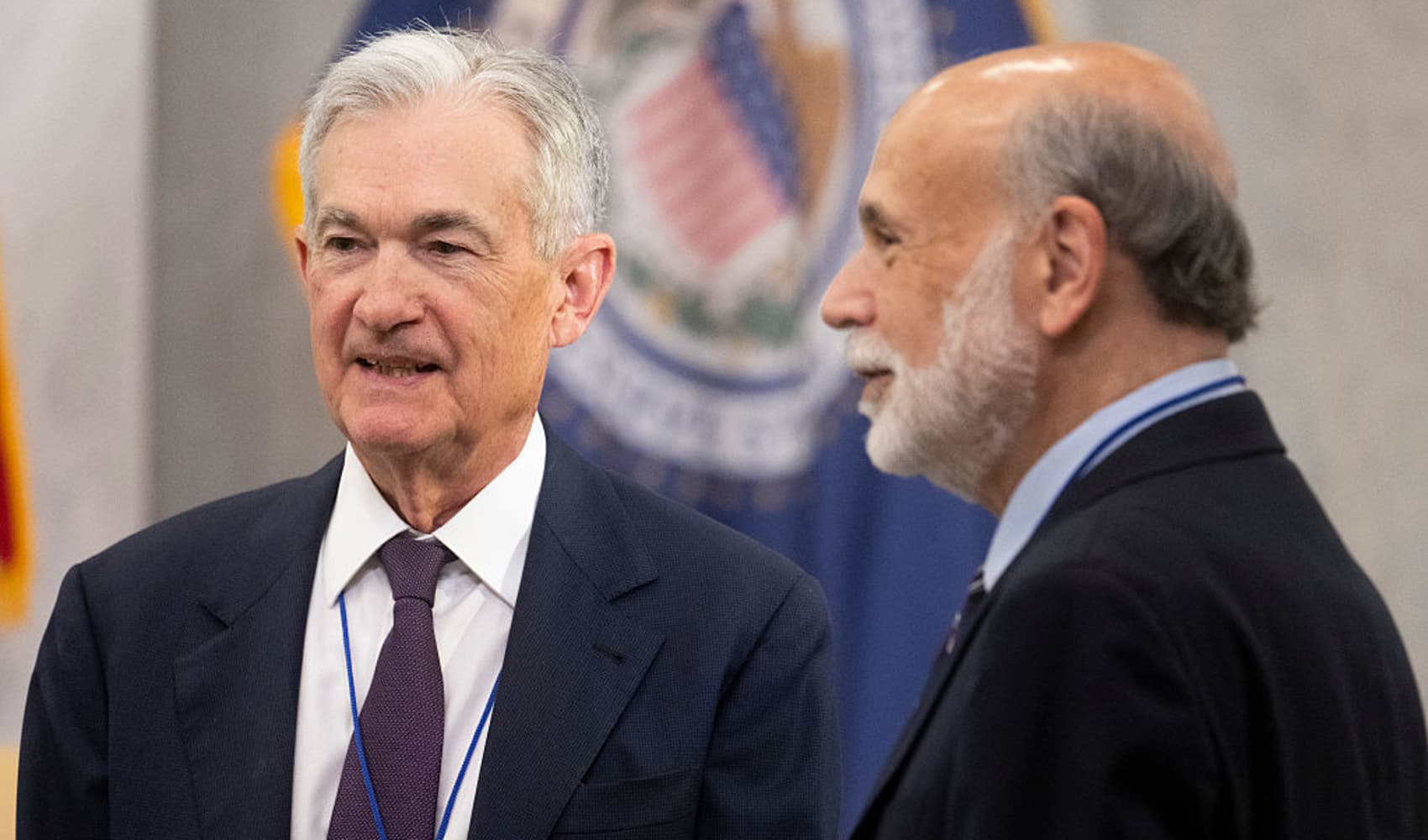High Credit Card Rates Stick: Banks Fooled Us?
Banks Sticking to High Credit Card Rates: Did They Fool Us?
Introduction: The Rate Hike That Stuck Around
Remember last year when credit card interest rates shot up faster than a rocket launch? And then those pesky monthly fees started popping up like unwanted weeds? Banks blamed it all on a proposed Consumer Financial Protection Bureau (CFPB) rule. They said it threatened their revenue streams, forcing their hand to protect themselves. Fair enough, we thought. But here's the kicker: that CFPB rule is dead, buried, and six feet under, thanks to successful legal challenges from bank trade groups. So, where are the rate rollbacks? Where are the fee reductions? Crickets. Turns out, those high rates might be stickier than we thought.
Why Are Banks Keeping Rates High? The Short Answer
The simple answer is: because they can. Why would they willingly give up a massive influx of cash? It’s like finding a twenty dollar bill on the sidewalk – are you really going to put it back?
The CFPB Rule: A Convenient Scapegoat?
The CFPB rule aimed to limit late fees on credit cards, capping them at a significantly lower amount than what banks were charging. Banks claimed this would hurt their profits and force them to raise rates and add fees to compensate. Some argued that the rule would discourage responsible borrowing, leading to more defaults and, ironically, higher rates for everyone. Others saw it as predatory behaviour from the get-go.
Synchrony and Bread Financial: Leading the Charge (to Higher Profits?)
Synchrony and Bread Financial, big names in the world of store-branded credit cards (think Amazon, Lowe’s, Wayfair), are reportedly holding firm on their higher rates. Executives from these companies have indicated in recent conference calls that they're not in a hurry to reverse course. These companies essentially provide the backbone for retailers to offer credit options.
The Power of Retail Partnerships
By partnering with major retailers, Synchrony and Bread Financial gain access to massive customer bases. This allows them to issue a large volume of cards, generating significant revenue from interest and fees. The allure of maintaining high profitability within these partnerships is undoubtedly a key factor in their reluctance to lower rates.
The Competitive Landscape: Are Other Banks Following Suit?
It's not just these two. It's highly likely that other banks are observing this situation and taking a similar approach. In a competitive landscape, no one wants to be the first to lower rates if it means sacrificing profits. It's a delicate dance of maximizing revenue while maintaining a competitive edge. But let's be honest: it feels more like a coordinated waltz to keep our wallets a little lighter.
Inflation: Still a Valid Justification?
While the CFPB rule is no longer a factor, banks might point to persistent inflation and the overall economic climate as reasons for maintaining high rates. The cost of doing business has increased, they might argue, and they need to pass those costs on to consumers. But are they truly justified? That’s a question worth asking.
What About the Prime Rate?
The prime rate, which is influenced by the Federal Reserve's interest rate decisions, plays a significant role in determining credit card APRs. If the Fed raises rates, credit card APRs typically follow suit. However, the reverse isn't always true. When the Fed pauses or even lowers rates, banks aren't always quick to pass those savings on to consumers. It's an upward ratchet effect, isn't it?
The Impact on Consumers: Who's Feeling the Pinch?
High credit card rates disproportionately affect consumers with lower credit scores or those who carry a balance from month to month. These individuals are already struggling financially, and high interest charges can quickly snowball into unmanageable debt.
The Debt Trap: A Vicious Cycle
For many, credit cards are a lifeline, especially during times of financial hardship. But high interest rates can turn that lifeline into a noose, trapping consumers in a cycle of debt. Every month, a significant portion of their payment goes towards interest, leaving them struggling to pay down the principal. This creates a situation where it becomes increasingly difficult to escape debt.
Regulation and Oversight: Is More Needed?
The CFPB's initial attempt to regulate late fees highlights the need for ongoing oversight of the credit card industry. Some argue that stronger regulations are necessary to protect consumers from predatory lending practices. Others believe that market forces should be allowed to dictate rates and fees.
What Can You Do? Strategies for Lowering Your Credit Card Costs
While you might not be able to single-handedly change the industry, you can take steps to lower your credit card costs:
- Shop Around: Compare APRs and fees from different card issuers.
- Negotiate: Call your credit card company and ask for a lower interest rate. You might be surprised at what you can achieve with a polite but firm request.
- Balance Transfer: Transfer your balance to a card with a lower introductory APR.
- Pay on Time: Avoid late fees by making your payments on time, every time.
- Pay More Than the Minimum: Even a small increase in your monthly payment can significantly reduce the amount of interest you pay and shorten the time it takes to pay off your debt.
Alternatives to Credit Cards: Exploring Other Options
Consider exploring alternatives to credit cards, such as:
- Debit Cards: Use your own money to make purchases.
- Personal Loans: Secure a fixed-rate loan for larger expenses.
- Emergency Fund: Build a savings cushion to cover unexpected costs.
The Role of Financial Literacy: Empowering Consumers
Financial literacy is crucial in helping consumers make informed decisions about credit cards and other financial products. By understanding how interest rates and fees work, individuals can better manage their debt and avoid falling into the debt trap. We need more comprehensive financial education in schools and communities to empower consumers to make smart financial choices.
Future Predictions: Will Rates Ever Go Down?
Predicting the future is always a gamble, but it's likely that credit card rates will remain elevated for the foreseeable future. While the Fed might eventually lower interest rates, banks will likely be slow to pass those savings on to consumers. The best course of action is to take control of your own finances and implement strategies to lower your credit card costs.
Conclusion: Banks and Credit Card APRs: Is the Relationship Broken?
The fact that banks are maintaining high credit card rates even after the CFPB rule was struck down raises serious questions about their commitment to fair lending practices. While they initially justified the rate hikes by blaming the regulation, their reluctance to reverse course suggests that profit maximization is the primary driver. As consumers, we must be vigilant in protecting our own financial interests and advocating for greater transparency and accountability in the credit card industry. Don’t just stand there – demand fairer rates and practices!
Frequently Asked Questions
1. Why did credit card rates increase so much in the past year?
Initially, banks cited the proposed CFPB rule limiting late fees as the reason for raising rates and adding fees. However, even after the rule was blocked, rates have remained high, suggesting other factors, like maximizing profits and general economic conditions, are also at play.
2. What can I do if my credit card interest rate is too high?
You can try negotiating a lower rate with your credit card company, transferring your balance to a card with a lower introductory APR, or exploring alternative payment methods like debit cards or personal loans.
3. Will the CFPB try to regulate credit card fees again?
It's possible. The CFPB is committed to protecting consumers, and they may explore other avenues for regulating credit card fees in the future, especially if current practices are deemed unfair or predatory.
4. How does the prime rate affect my credit card APR?
The prime rate, influenced by the Federal Reserve, serves as a benchmark for credit card APRs. When the prime rate goes up, credit card APRs typically follow. However, the reverse isn't always true, and banks may be slow to lower APRs even when the prime rate decreases.
5. Are store-branded credit cards generally a good idea?
Store-branded credit cards can offer rewards and discounts, but they often come with higher interest rates than general-purpose credit cards. It's important to carefully consider the terms and conditions before applying for a store-branded card.

